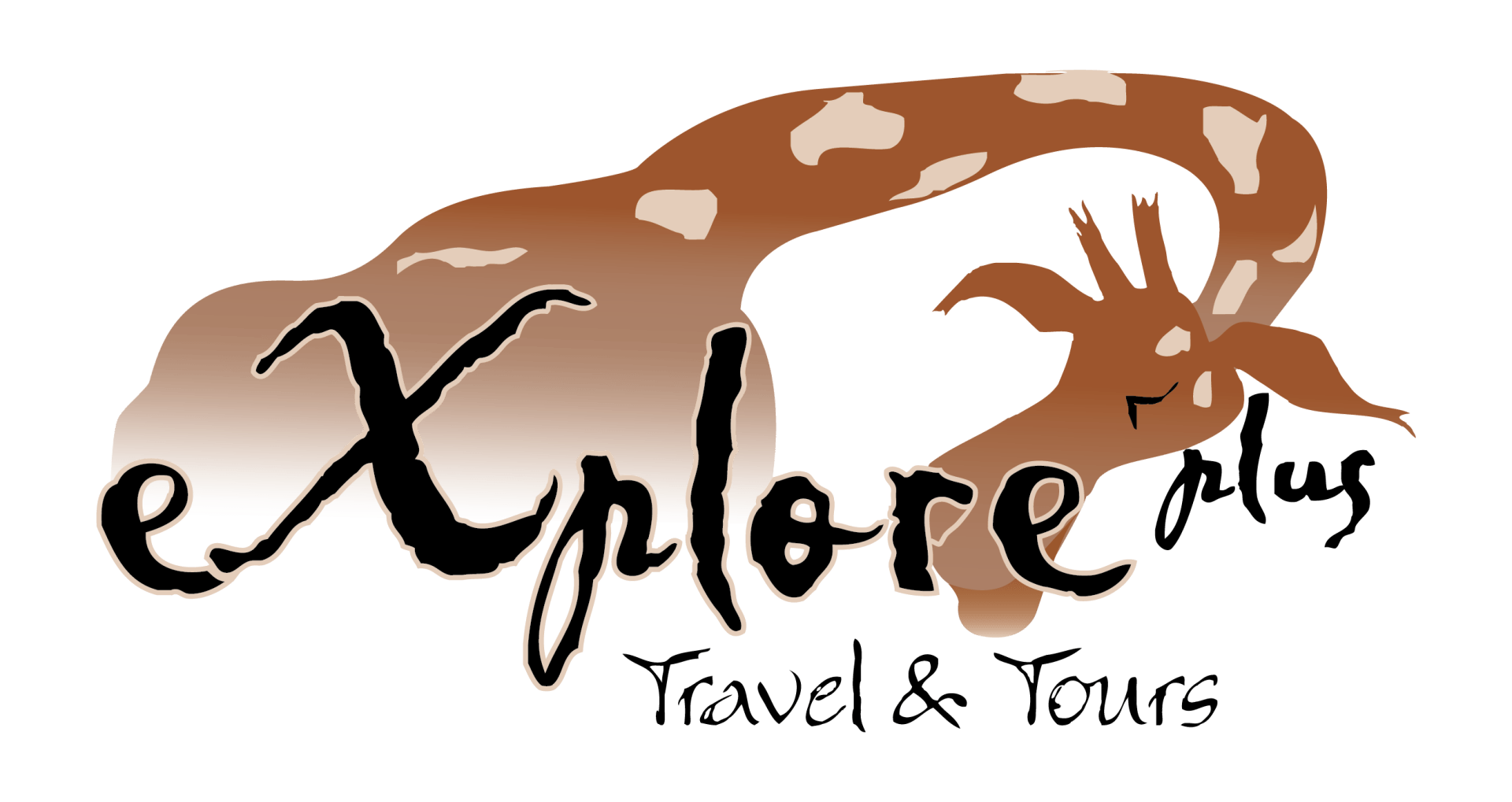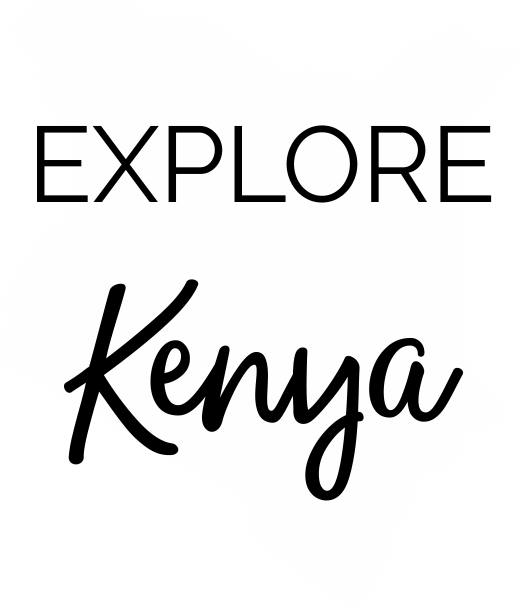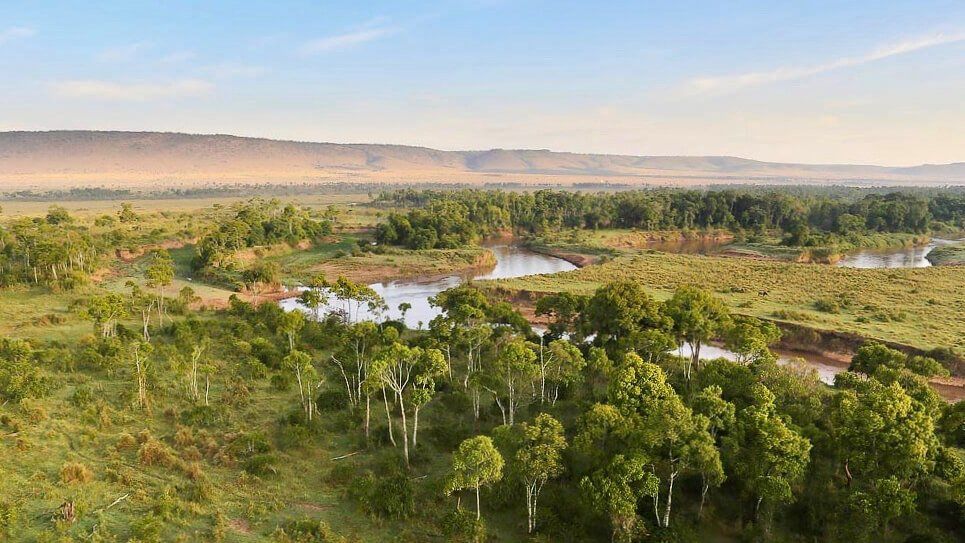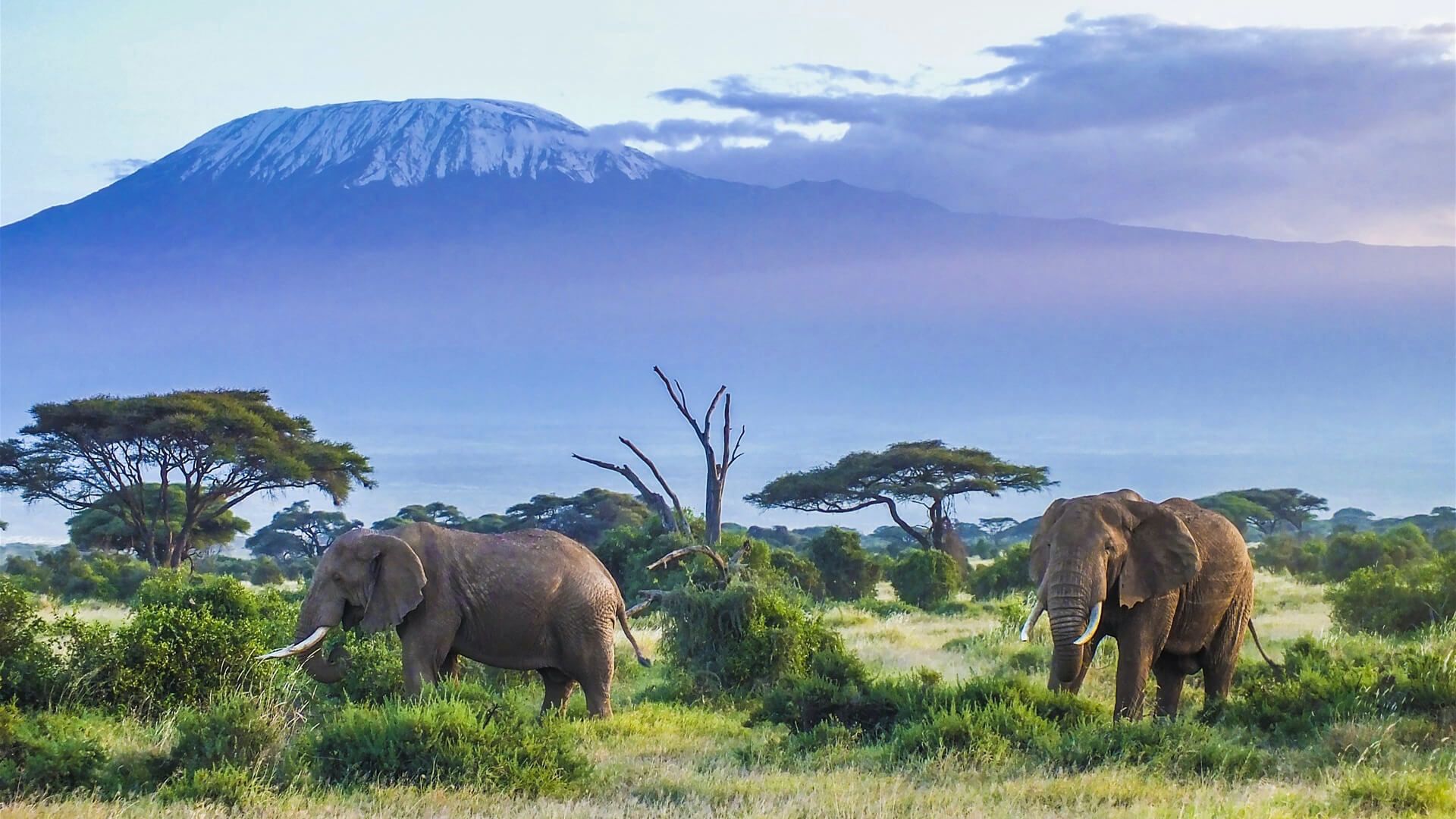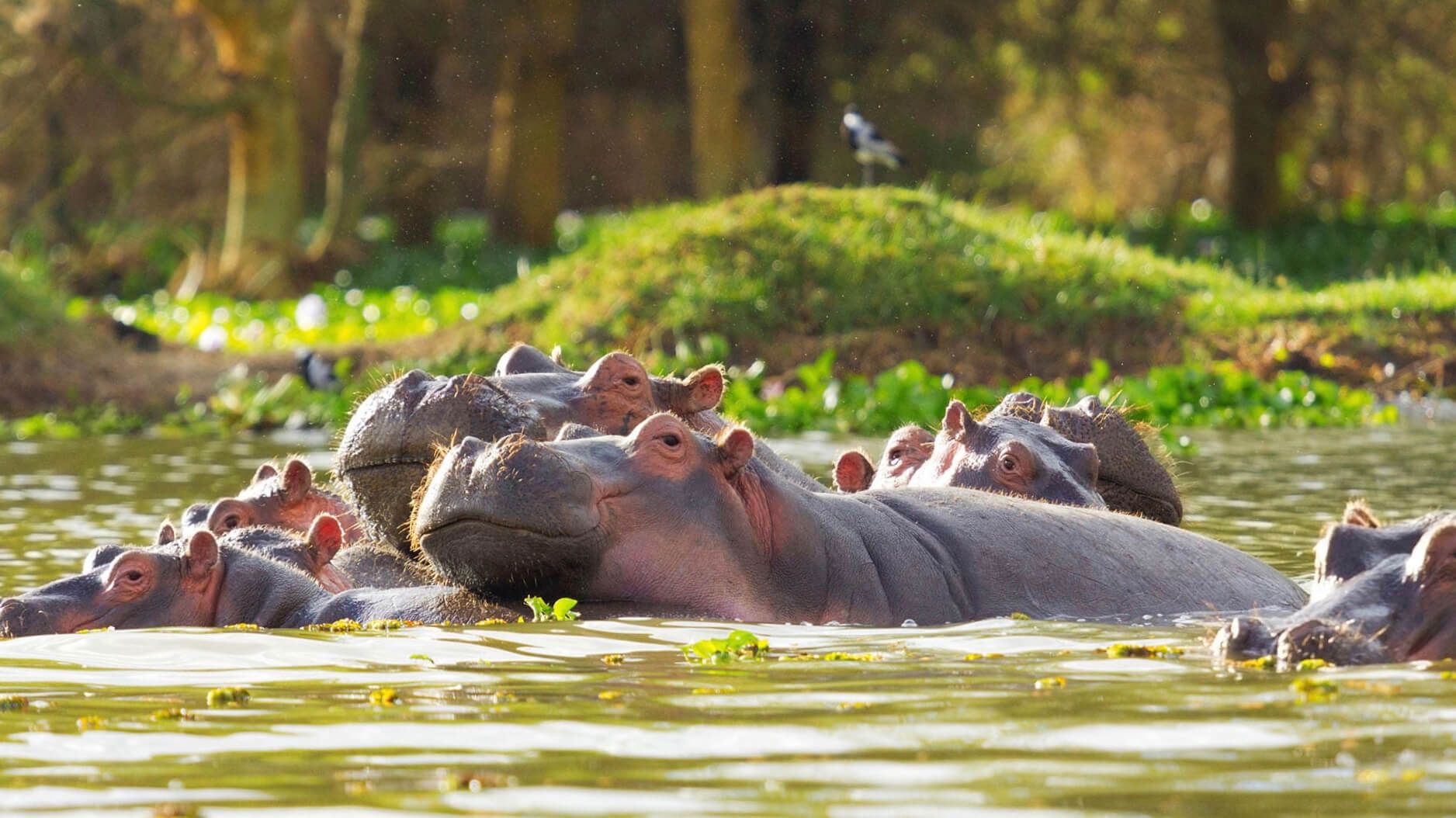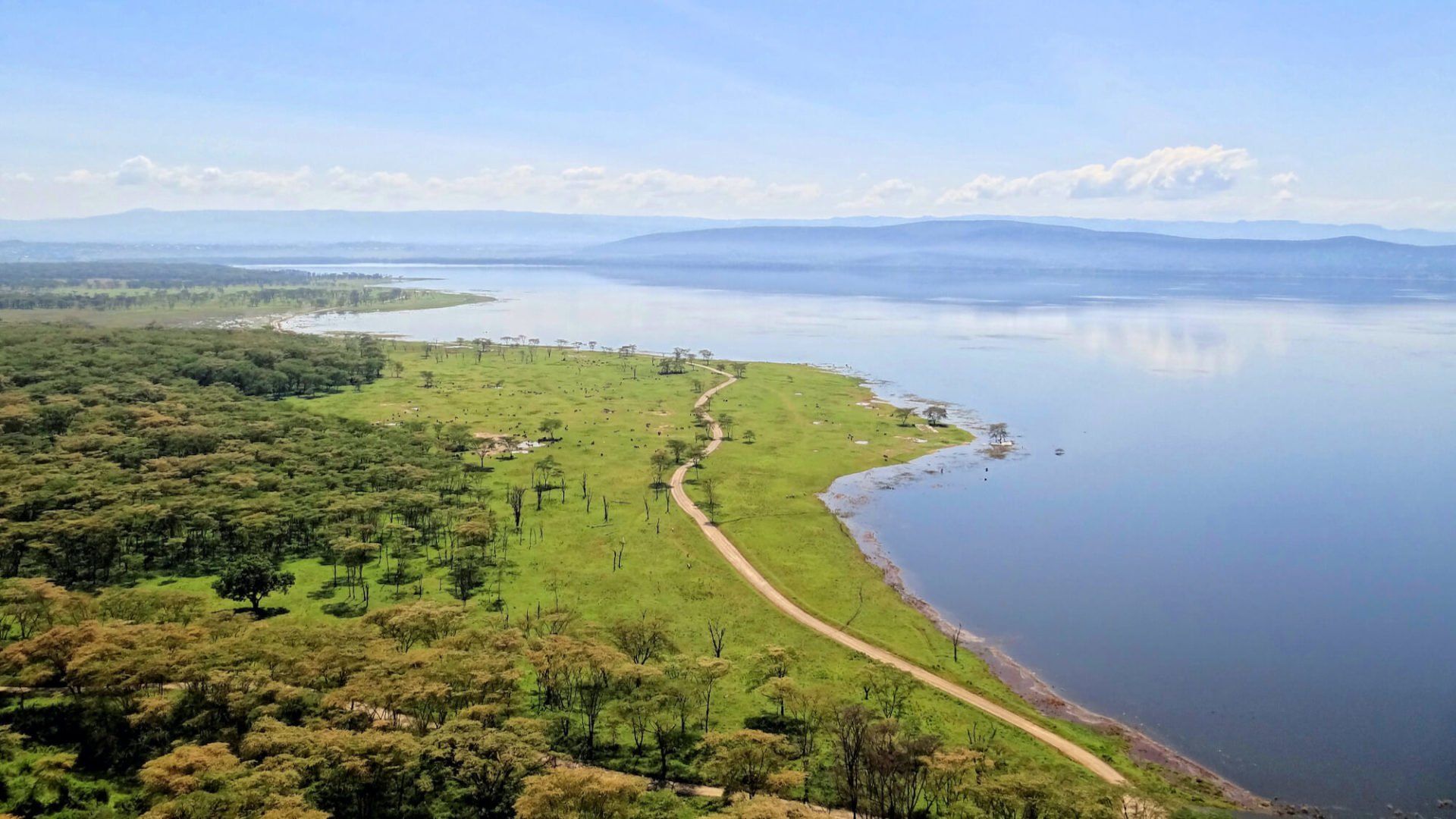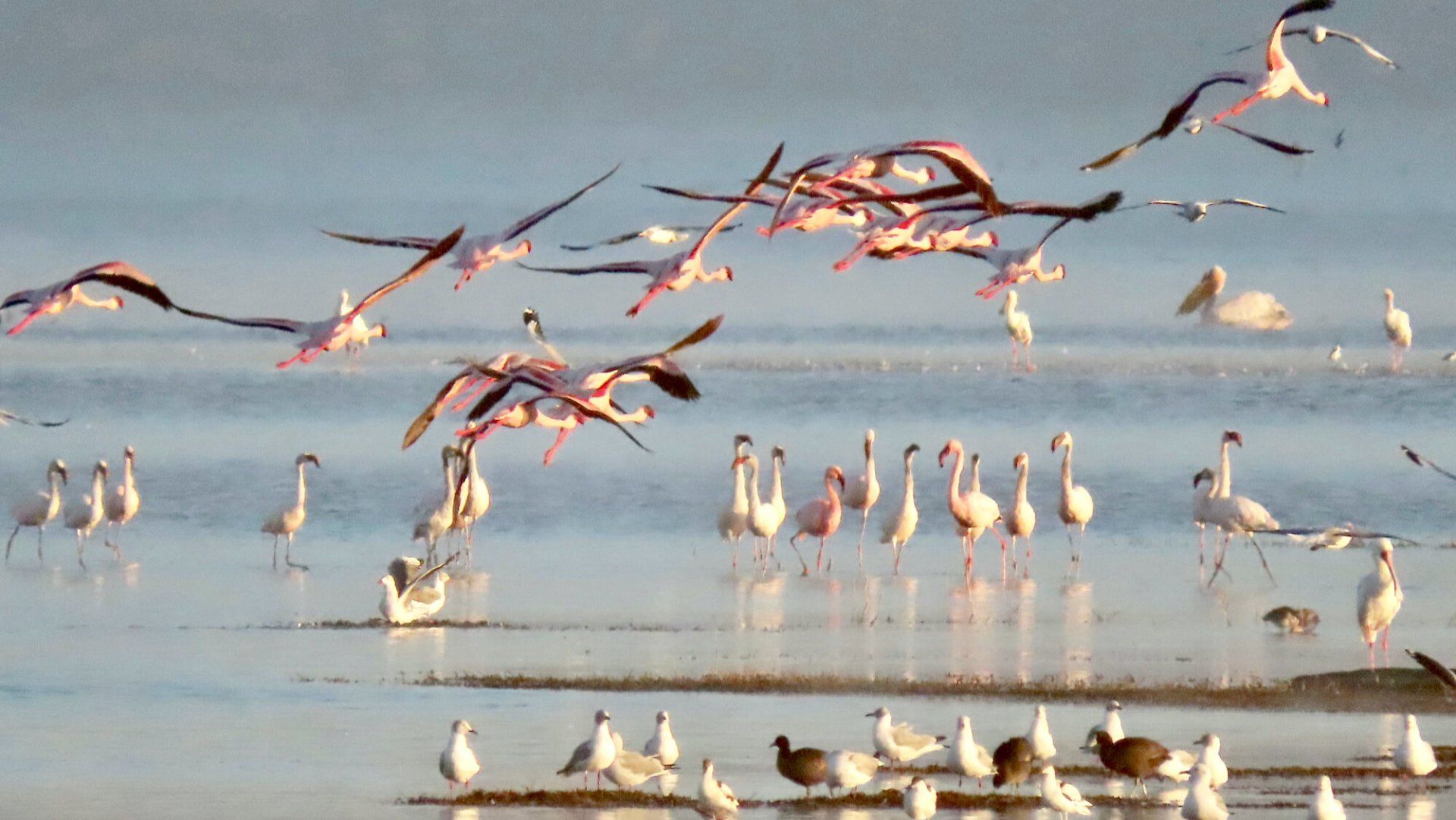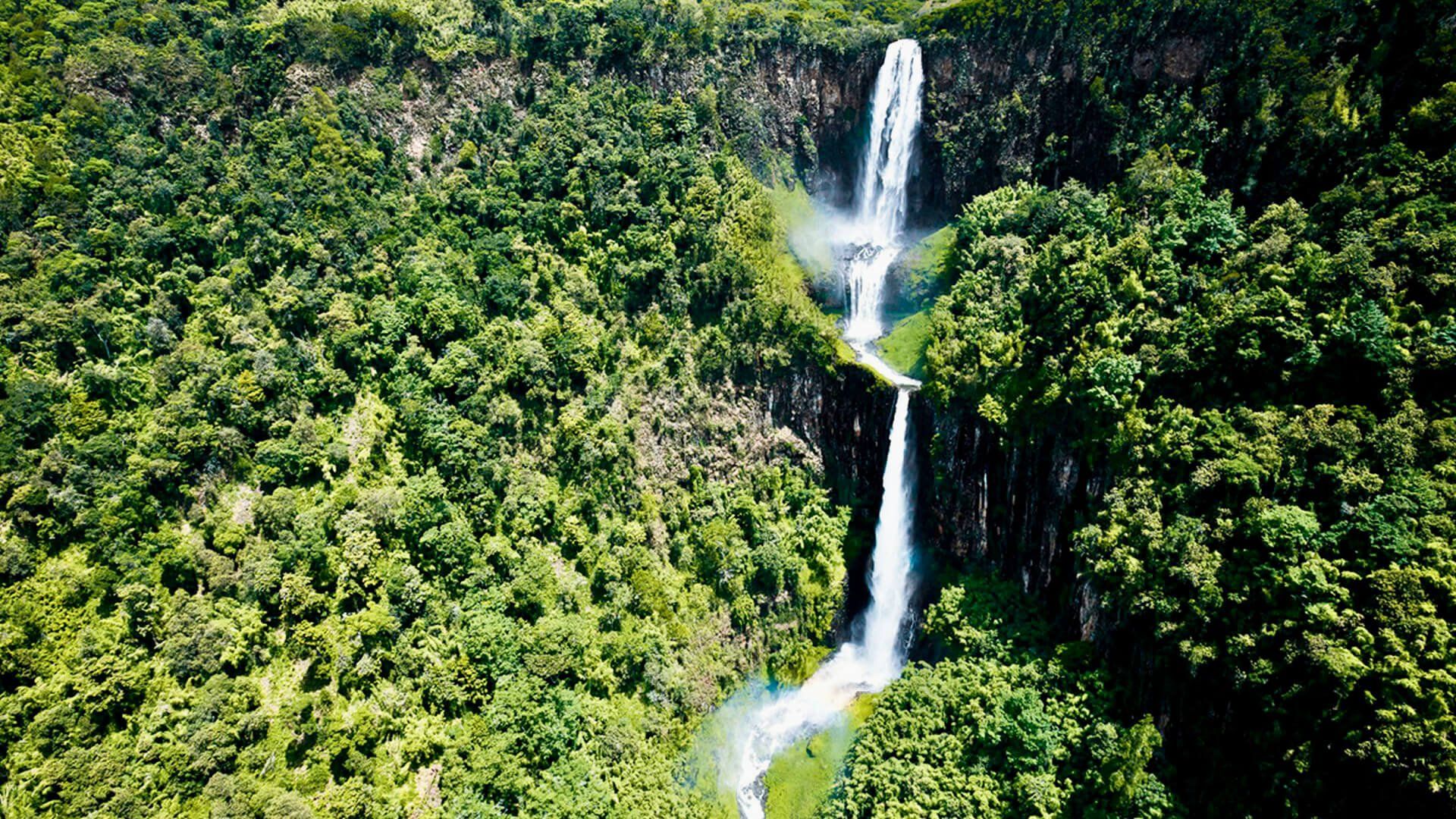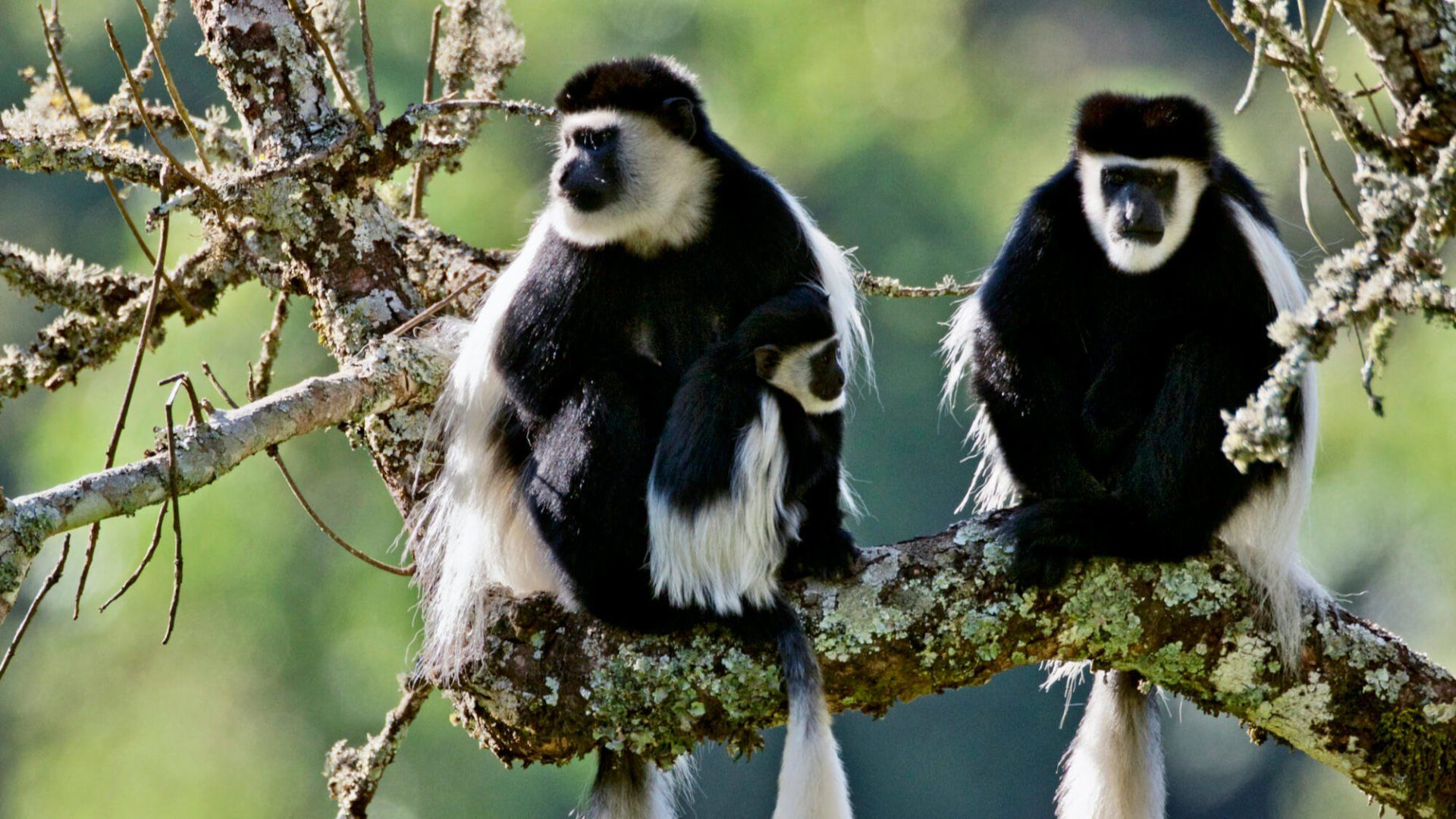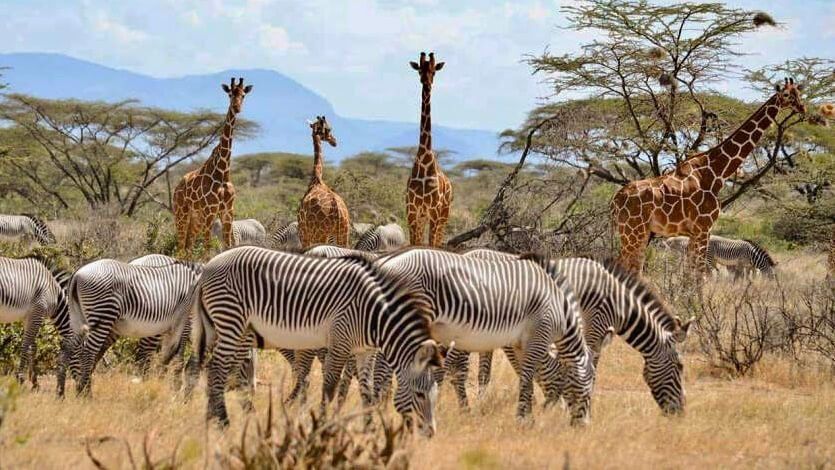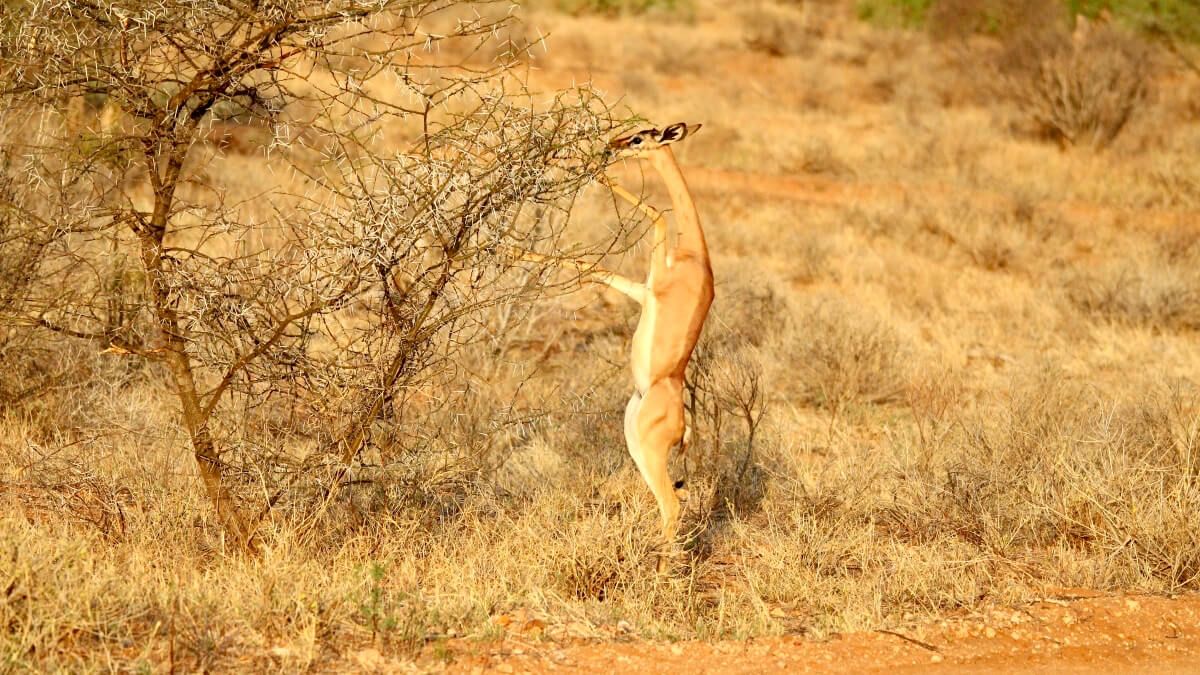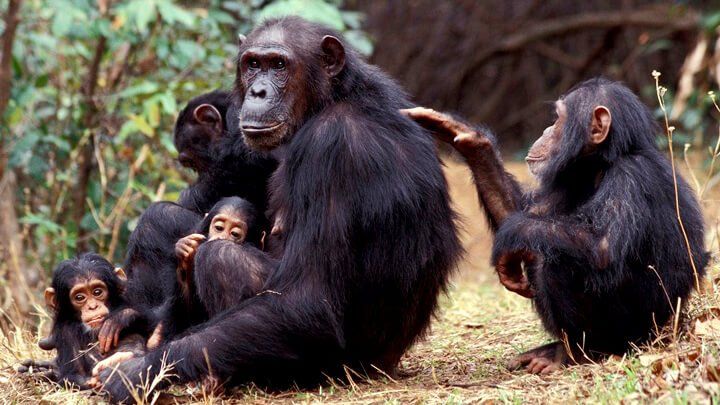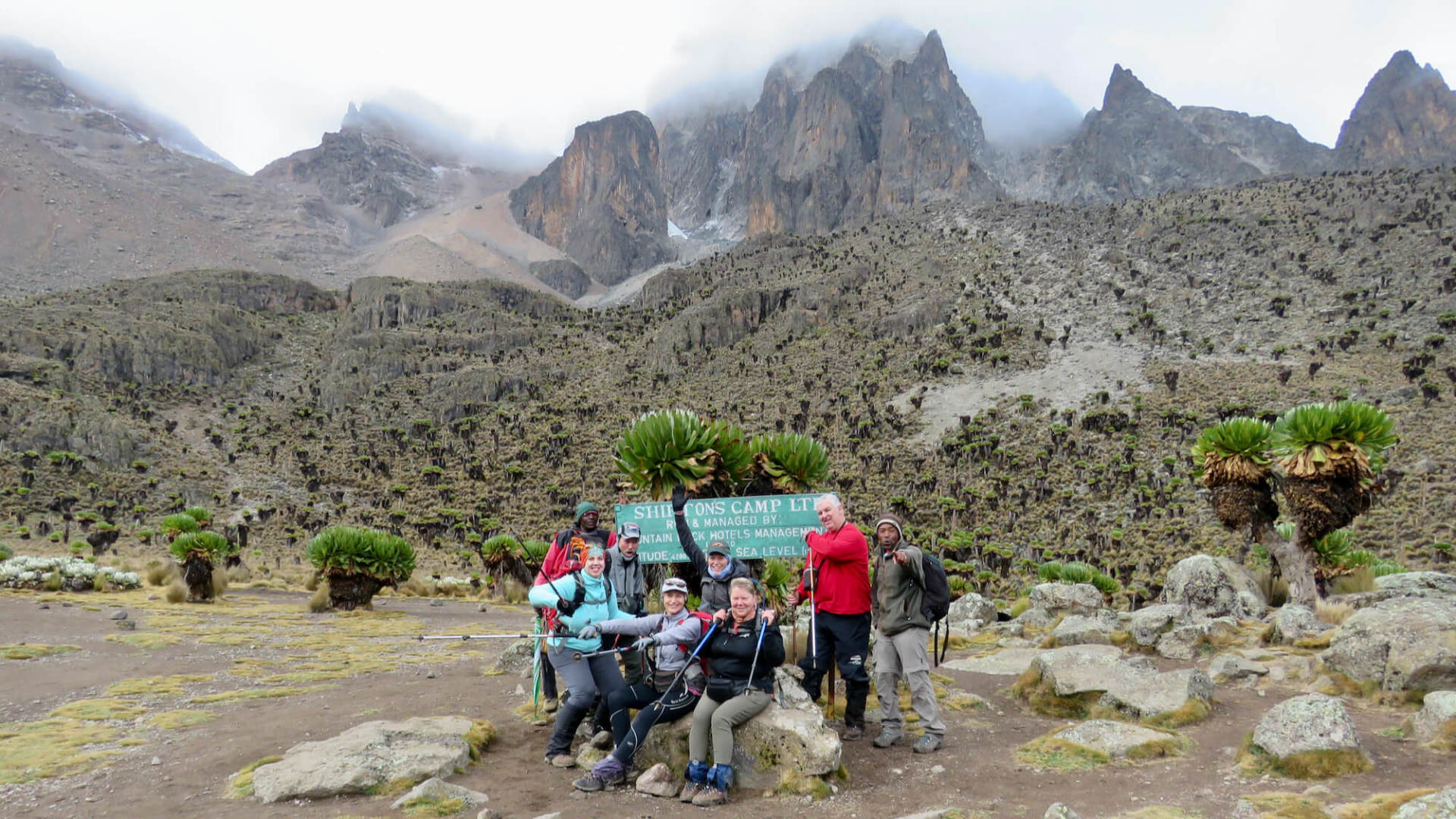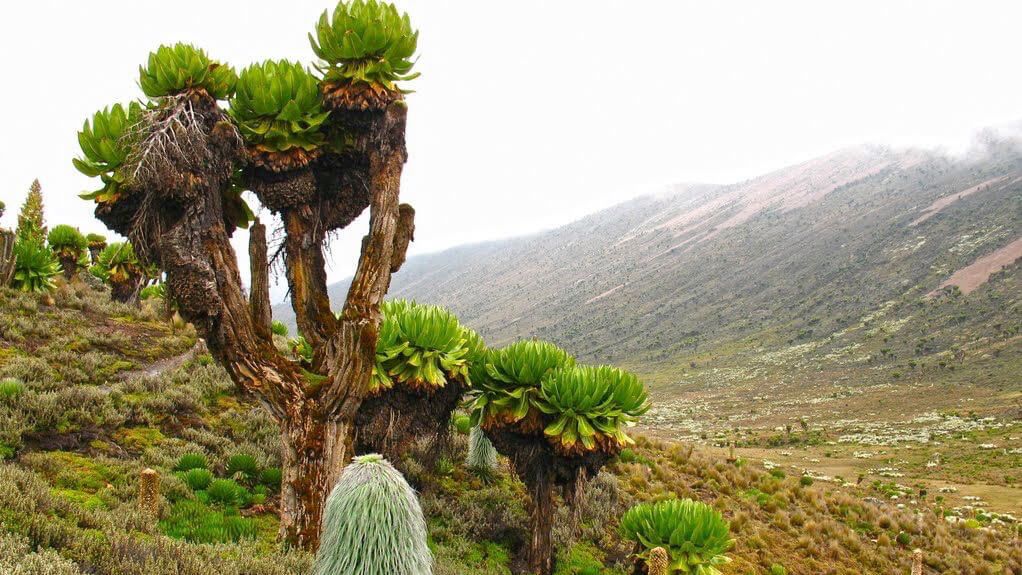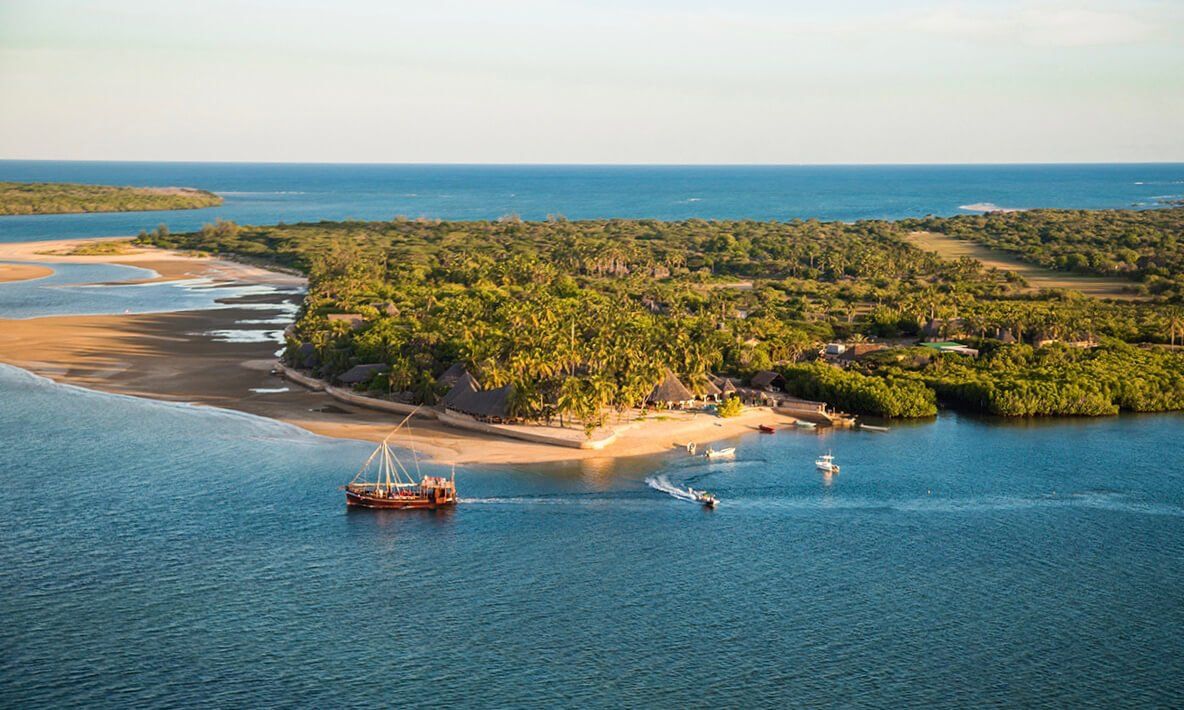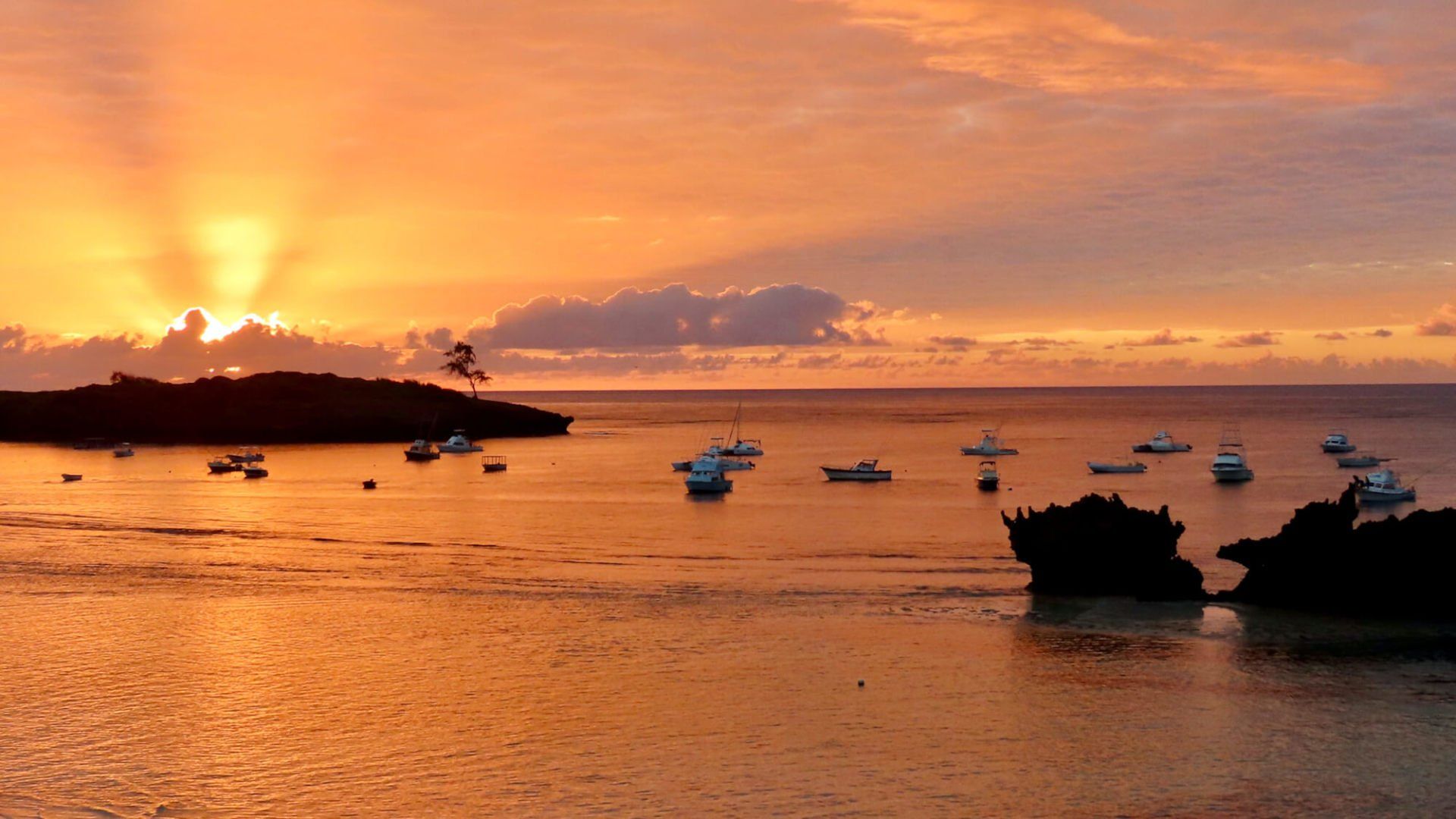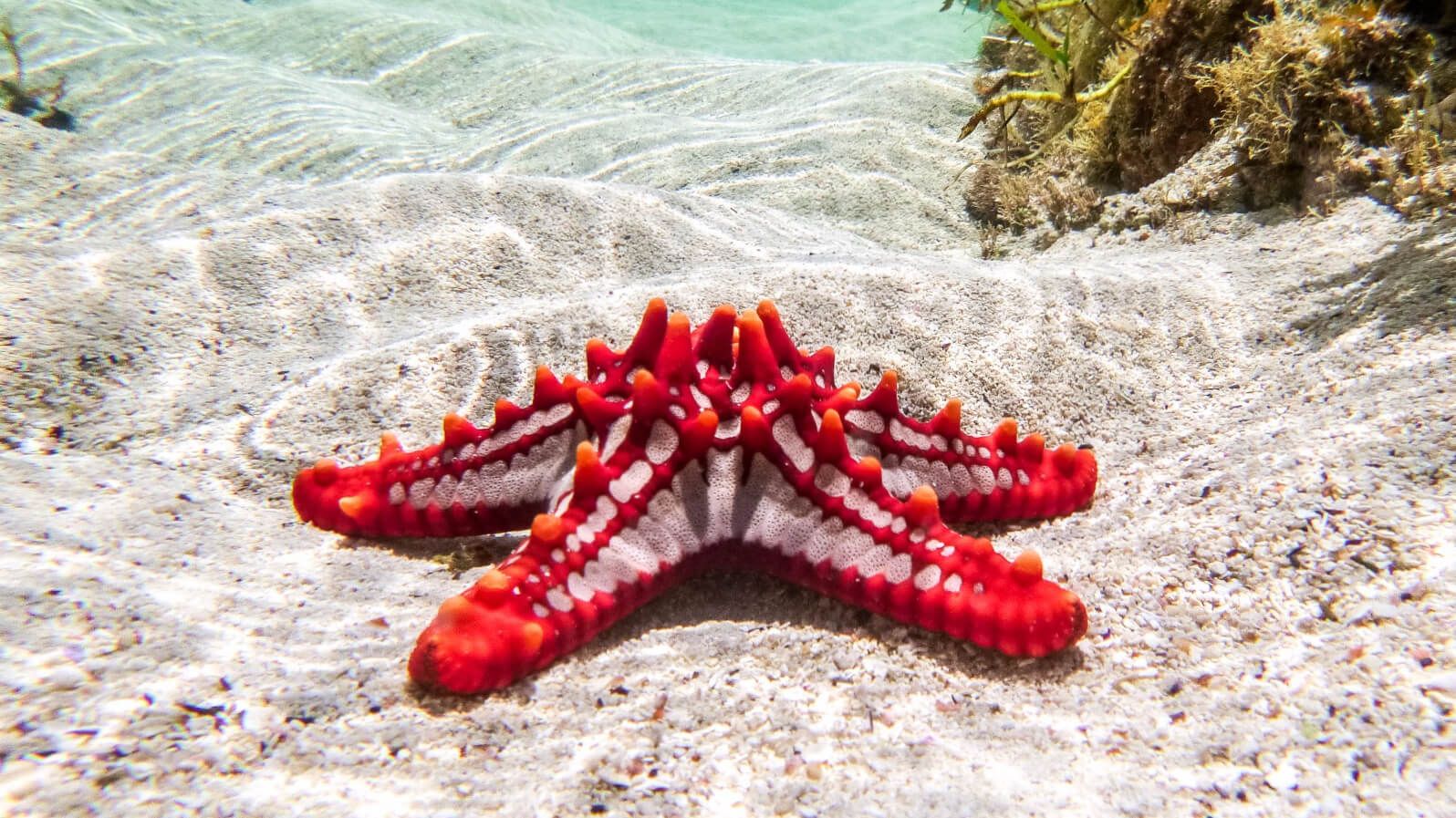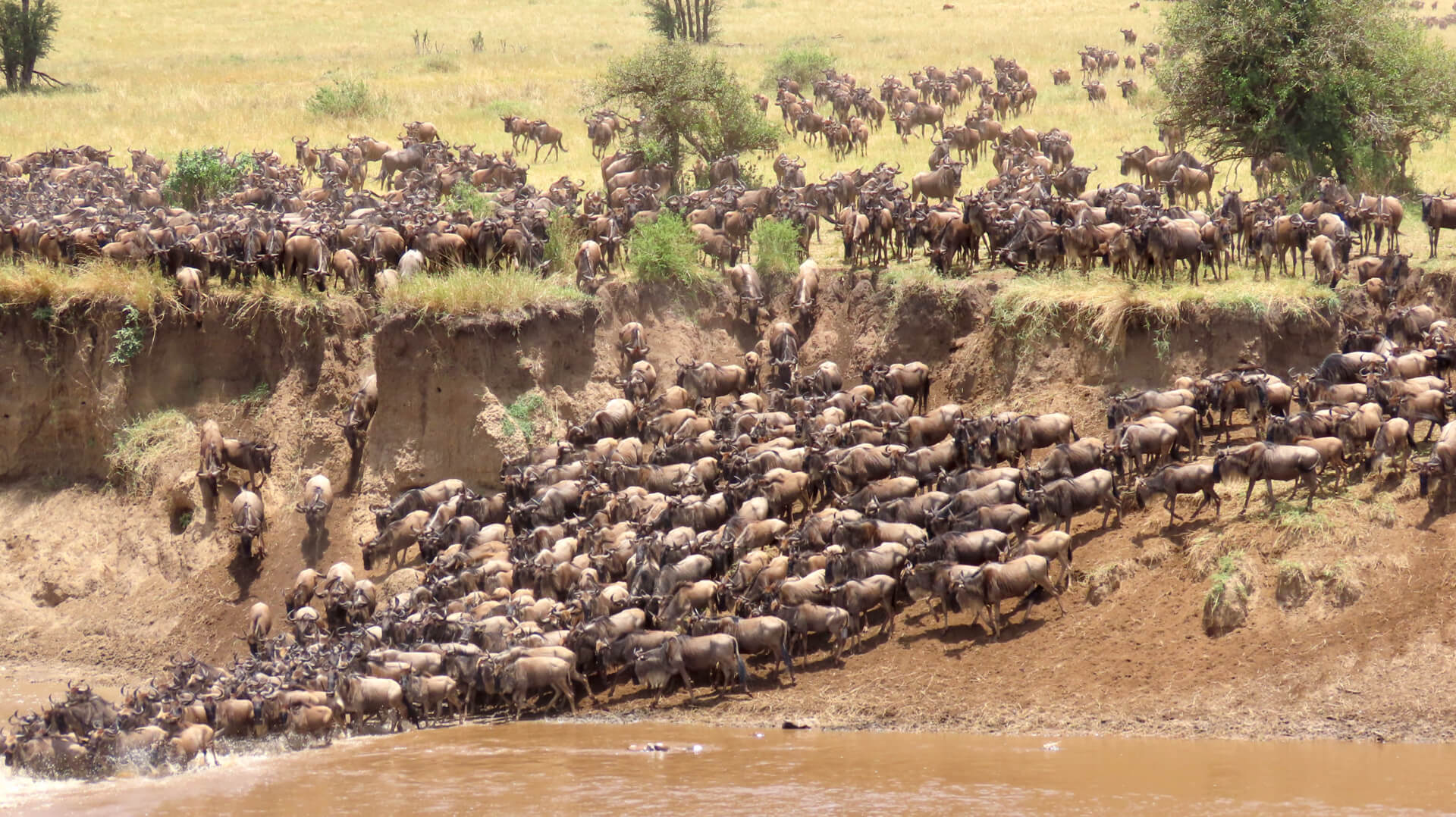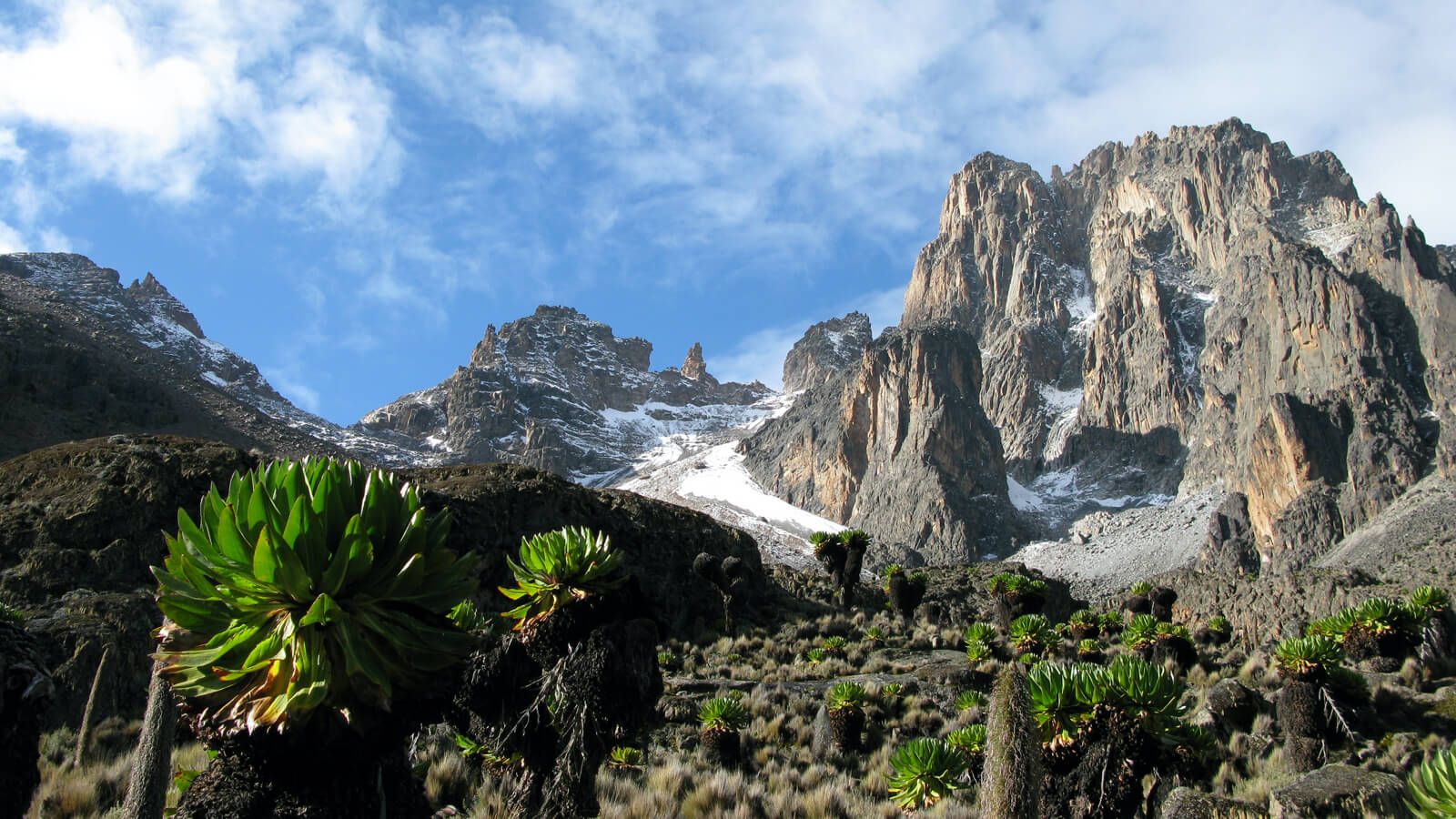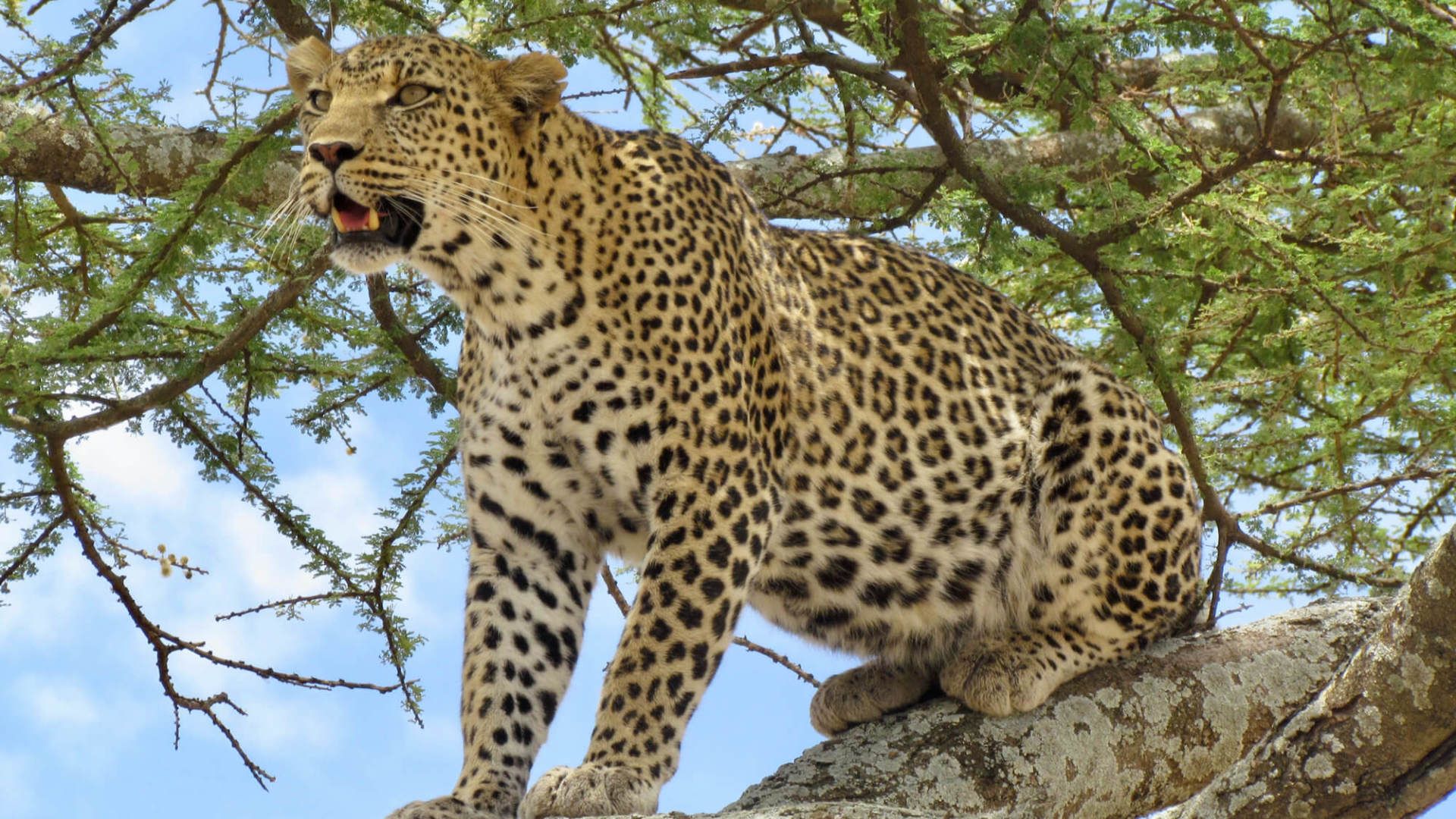Kenya National Parks
-
The Greater Masai Mara
Brief profile:
- Covers 1,600 km²
- World-famous for its high density of herbivores and predators
- The annual migration of some two million Wildebeest
- 95 species of mammal
- 500 bird species, including 53 birds of prey
Highlights:
- The annual Great Migration
- Close-up sightings of cheetah
- Scenic hot air balloon safaris across the vast plains
- Excellent photographic opportunities
- Huge savannahs of golden grasslands
- Well known for its black-maned lion, as well as its abundant resident wildlife
- River crossings
The Masai Mara park sits a top the list of national parks in Kenya, is situated in the Great Rift Valley, a fault line somewhat 5,600km long, extending from Ethiopia's Red Sea through Kenya, Tanzania, Malawi and into Mozambique.
There are four main types of topography in the Mara:
- Ngama Hills to the east with sandy soil and leafy bushes and loved by black rhinos.
- Oloololo escarpment forming the western boundary and rising to a magnificent plateau.
- Mara Triangle bordering the Mara River with lush grassland and acacia woodlands supporting masses of game, especially migrating wildebeests.
- Central plains form the largest part of the reserve, with scattered bushes and boulders on rolling grasslands favoured by the plain's game.
There is an abundance of wildebeests, zebras, impalas, topis, giraffes and Thomson's gazelles on the plains. Visitors often spot leopards, lions, hyenas, cheetah, jackal, bat-eared foxes and even black rhinos during game drives. The Mara river is filled with hippos and enormous Nile crocodiles. Every July (sometimes August), the wildebeests travel from the Serengeti plains to the Masai Mara. In October, once they have feasted and the grass is depleted, they return to the Southern Serengeti. The Mara birds appear in every size and colour including the beautiful lilac-breasted roller and plenty of large species like eagles, vultures and storks.
The central Masai Mara Reserve is surrounded by the Mara conservation area, owned by different Maasai communities who formed conservation partnership agreements with private camp-owners.
- Mara Triangle: This is the north-western part of the Masai Mara National Reserve and is managed by the Mara Conservancy, a non-profit organization. It is divided from the rest of the Masai Mara National Reserve by the Mara river. The Mara Triangle is less visited and less crowded, resulting in abundant game sightings on the plains and between the volcanic hills that distinguish this corner of the Mara.
- Mara North Conservancy: This is a beautiful private wilderness area of more than 300 sq. km, effectively increasing the size of the National Reserve by 20%. It is a vital part of the Masai Mara ecosystem as it forms the north-western zone, bordering the Masai Mara National Reserve in the south. The Mara North Conservancy (MNC) is a partnership between eleven member camps and more than 800 Maasai landowners. The aim is to create a best-practice, world-class conservancy with long-term commitments to the environment, wildlife and local communities. This area is the central dispersal zone for the annual "Great Migration" and supports a wide variety of additional species. The most recognizable include lion, cheetah, leopard, buffalo, hyena, elephant, crocodile, wild dog, giraffe, hippopotamus and over 450 bird species.
- Olare Motorogi Conservancy: It became a haven for big cats and forms part of the annual wildebeest migration route. The conservancy covers 350 sq. km, offering some of East Africa's finest, year-round wildlife viewing. The area boasts one of the highest densities of lions per square kilometre in Africa and over 50 different species of raptors have been identified. Tourist accommodation in the conservancy is limited to a maximum of 94 beds in five mobile camps. This equates to a ratio of one game-viewing vehicle for every 2,100 acres, a move that is aimed at maximizing the client's wilderness experience and minimizing the environmental impact of tourism.
- Mara Naboisho conservancy: Naboisho means "partnership" in Maa, the Maasai language. The 500 sq. km conservancy consists of land contributions from 500 Maasai landowners. One of the key motivations for creating the Mara Naboisho conservancy was to aid the protection and conservation of the wildlife and landscape. The conservancy is home to the big cats (in impressive numbers) and herds of elephant, giraffe and wildebeest. Unlike its neighbour, the National Reserve, this private conservancy strictly monitors the number of tourists who enter the area, reducing the number of vehicles and the human impact on the environment and wildlife. The charm of the conservancy is its exclusivity.
- Isaaten conservancy: A non-profit company established to create best practice in tourism and conservation, regain the conservation values of the area, enhance benefits of local communities and promote low impact “private” tourism. The conservancy is a critical wildlife dispersal area for migratory wildlife in the Mara ecosystem. Common animals include Burchell's zebra, Thompson's gazelles, impalas, elephants, giraffes, spotted hyenas, jackals, African civets, genets, banded mongooses, warthogs, tree hyraxes and porcupines. Big cats, including lions, are also present. The conservancy has an impressive variety of birds.
- Siana conservancy: This 290 sq. km conservancy borders the Masai Mara National Reserve. It is home to all animal species found in the Mara ecosystem, except black rhinos. The area within the conservancy offers diverse landscapes and vegetation.
- Ol Kinyei conservancy: This award-winning pioneer conservancy was the first in the Mara ecosystem to set aside an area exclusively aimed at wildlife conservation (no human settlements or cattle allowed). This 175 sq. km conservancy belongs to a Maasai community and provides them with tangible returns to help them improve their lives and not be solely dependent on cattle.
Best Time to Visit:
| Jan | Feb | Mar | Apr | May | Jun | Jul | Aug | Sept | Oct | Nov | Dec |
|---|---|---|---|---|---|---|---|---|---|---|---|
| Very Good | Very Good | Very Good | Good | Good | Very Good | Very Good | Very Good | Very Good | Very Good | Good | Very Good |
| Jan | Feb | Mar | Apr | May | Jun | Jul | Aug | Sept | Oct | Nov | Dec |
|---|---|---|---|---|---|---|---|---|---|---|---|
| Very Good | Very Good | Very Good | Good | Good | Very Good | Very Good | Very Good | Very Good | Very Good | Good | Very Good |
| Jan | Feb | Mar | Apr | May | Jun |
|---|---|---|---|---|---|
| Very Good | Very Good | Very Good | Good | Good | Very Good |
| Jul | Aug | Sept | Oct | Nov | Dec |
|---|---|---|---|---|---|
| Very Good | Very Good | Very Good | Very Good | Good | Very Good |
- Amboseli National Park
Brief profile:
- Covering 392 km²
- Located on the border with Tanzania at the foot of Africa's highest mountain, Mount Kilimanjaro
- Amboseli has five main wildlife habitats: open plains, acacia woodland, rocky thorn bush area, swamps and marshland. It also has a temporary lake, Lake Amboseli
Highlights:
- Large herds of elephants
- Views of Mount Kilimanjaro
- An abundance of African wildlife, including the big five
- Over 400 bird species
- Observation Hill, which offers a view of the entire park especially the swamps which accommodates numerous elephants
The park is 392 sq. km in size at the core of an 8,000 sq. km ecosystem that spreads across the Kenya-Tanzania border. It is famous for being the best place in Africa to get close to free-ranging elephants and other wildlife species. Here you will have the opportunity to meet the Maasai people and see spectacular views of Mount Kilimanjaro, the highest freestanding mountain in the world. Amboseli has a very fragile ecosystem, submitted to significant seasonal variations. During the wet season, the rains flood the lake bed and the surrounding area. The high salt deposits in the lakebed inhibits tree growth and only small patches of acacia and palm trees are found far from the lake. The salt-rich pastures provide good feed to the herbivores. Despite the first impression of the park being dusty and arid, Amboseli has abundant groundwater overflowing into various underground streams. They rise into two clear water springs in the centre of the park, giving birth to large marshes like the Loginya Swamp where elephants, hippos and buffalo's find refuge.
Best Time to Visit:
| Jan | Feb | Mar | Apr | May | Jun | Jul | Aug | Sept | Oct | Nov | Dec |
|---|---|---|---|---|---|---|---|---|---|---|---|
| Very Good | Very Good | Very Good | Good | Good | Very Good | Very Good | Very Good | Very Good | Very Good | Good | Good |
| Jan | Feb | Mar | Apr | May | Jun |
|---|---|---|---|---|---|
| Very Good | Very Good | Very Good | Good | Good | Very Good |
| Jan | Feb | Mar | Apr | May | Jun | Jul | Aug | Sept | Oct | Nov | Dec |
|---|---|---|---|---|---|---|---|---|---|---|---|
| Very Good | Very Good | Very Good | Good | Good | Very Good | Very Good | Very Good | Very Good | Very Good | Good | Good |
| Jul | Aug | Sept | Oct | Nov | Dec |
|---|---|---|---|---|---|
| Very Good | Very Good | Very Good | Very Good | Good | Good |
- Lake Naivasha National Park
Brief profile:
- Lake Naivasha is a freshwater lake in Kenya
- Over 400 species of birds
- The lake is almost 13 km across, but its waters are shallow with an average depth of only 5 meters.
- Lake Naivasha is marked as the RAMSAR site.
Highlights:
- The lake is also famous for its hippo population, and there are more than 400 here
- Lake Naivasha boat trips
- Colobus monkeys are often seen in the canopy of the Acacia forests around the lake
- The two smaller lakes nearby, Oloidien and Sonachi a bright green cater lake
- Birdwatchers - over 400 species
- Sunsets
Lake Naivasha is a beautiful freshwater lake, fringed by thick papyrus. The lake is almost 13 km across, but its water is shallow with an average depth of only 5 meters. The lake draws a big variety of game to its shores. Giraffes wander among the acacia, buffaloes wallow in the swamps and Colobus monkeys call from the treetops while the large hippo population sleeps the day out in the shallows. Naivasha is traditionally Masai land. The name of the lake is a colonial misinterpretation of the original Masai name “Nai'posha”, meaning ''rough water" in reference to the afternoon storms that can produce high white-capped waves across the lake. The lake is a renownded source of water for traditional Masai herds and they can still be seen along the lakeside roads.
Best Time to Visit:
| Jan | Feb | Mar | Apr | May | Jun |
|---|---|---|---|---|---|
| Very Good | Very Good | Good | Good | Good | Very Good |
| Jul | Aug | Sept | Oct | Nov | Dec |
|---|---|---|---|---|---|
| Very Good | Very Good | Very Good | Very Good | Good | Good |
| Jan | Feb | Mar | Apr | May | Jun | Jul | Aug | Sept | Oct | Nov | Dec |
|---|---|---|---|---|---|---|---|---|---|---|---|
| Very Good | Very Good | Good | Good | Good | Very Good | Very Good | Very Good | Very Good | Very Good | Good | Good |
| Jan | Feb | Mar | Apr | May | Jun | Jul | Aug | Sept | Oct | Nov | Dec |
|---|---|---|---|---|---|---|---|---|---|---|---|
| Very Good | Very Good | Good | Good | Good | Very Good | Very Good | Very Good | Very Good | Very Good | Good | Good |
- Lake Nakuru National Park
Brief profile:
- Covers 62 km²
- The only park within Kenya to be entirely fenced in due to the rhino population
- Twenty-seven per cent (27%) of the park is comprised of the Lake Nakuru waters
- The lake is a designated RAMSAR site (protected under the RAMSAR Convention on Wetlands)
Highlights:
- Thousands of flamingo (Greater and Lesser)
- A shallow alkaline lake set in a picturesque landscape of surrounding woodland and grassland
- A variety of terrestrial birds numbering about 450 species
- Unique vegetation: About 550 different plant species including the unique and biggest euphorbia forest in Africa
Lake Nakuru is internationally known for its flamingos. At times there may be almost two million flamingos inhabiting the area, forming a stunningly beautiful deep pink band around the edges of the lakeshore. This alkaline lake is recognised as being one of the natural wonders of the world. Lake Nakuru is also a rhino sanctuary, protecting a population of over 40 black and over 60 white rhino, but the flamingos have always been the main attraction. More than 400 bird species and over 50 mammal species have been recorded and it is perhaps the best place in Kenya to see leopards. Troops of black-and-white Colobus monkeys can be seen in the yellow-barked acacias. The rare Rothschild’s giraffe, herds of buffalo, dik-dik, klipspringers and eland are among the generally seen game.
Best Time to Visit:
| Jan | Feb | Mar | Apr | May | Jun | Jul | Aug | Sept | Oct | Nov | Dec |
|---|---|---|---|---|---|---|---|---|---|---|---|
| Very Good | Very Good | Good | Good | Very Good | Very Good | Very Good | Very Good | Very Good | Very Good | Good | Good |
| Jan | Feb | Mar | Apr | May | Jun |
|---|---|---|---|---|---|
| Very Good | Very Good | Good | Good | Good | Very Good |
| Jul | Aug | Sept | Oct | Nov | Dec |
|---|---|---|---|---|---|
| Very Good | Very Good | Very Good | Very Good | Good | Good |
| Jan | Feb | Mar | Apr | May | Jun | Jul | Aug | Sept | Oct | Nov | Dec |
|---|---|---|---|---|---|---|---|---|---|---|---|
| Very Good | Very Good | Good | Good | Good | Very Good | Very Good | Very Good | Very Good | Very Good | Good | Good |
- Aberdare National Park
Brief profile:
- Covers an area of 766 km²
- Some 290 bird species are found in the park
- The highest and tallest waterfalls in Kenya — a breathtaking sight that plunges 273 metres
Highlights:
- In Kenya's Central Highlands, it has a unique range of moors and tropical forests
- Chance to see rare forest animals like the bongo antelope, Colobus monkey, black leopard
- Spectacular waterfalls plunge into pools and have trout-filled streams.
- The park has several picturesque waterfalls.
The park contains a wide range of landscapes – from the mountain peaks that rise to 4,300 m above sea level, to deep valleys intersected by streams, rivers, and waterfalls. Animals that can be observed in Aberdare National Park include leopards, elephants, giant forest hogs, bushbucks, mountain reedbucks, waterbucks, Cape buffaloes, suni, side-striped jackals, elands, duikers, olive baboons, black and white colobus monkeys and sykes monkeys. Rarer sightings include the African golden cat and the bongo – an elusive forest antelope that lives in the bamboo forest. The Aberdare also contains a large eastern black rhino population. To protect the critically endangered bongo, the lions of the park have been moved to other Kenya parks.
Best Time to Visit:
| Jan | Feb | Mar | Apr | May | Jun | Jul | Aug | Sept | Oct | Nov | Dec |
|---|---|---|---|---|---|---|---|---|---|---|---|
| Very Good | Very Good | Very Good | Good | Good | Very Good | Very Good | Very Good | Very Good | Very Good | Good | Good |
| Jan | Feb | Mar | Apr | May | Jun |
|---|---|---|---|---|---|
| Very Good | Very Good | Very Good | Good | Good | Very Good |
| Jul | Aug | Sept | Oct | Nov | Dec |
|---|---|---|---|---|---|
| Very Good | Very Good | Very Good | Very Good | Good | Good |
| Jan | Feb | Mar | Apr | May | Jun | Jul | Aug | Sept | Oct | Nov | Dec |
|---|---|---|---|---|---|---|---|---|---|---|---|
| Very Good | Very Good | Very Good | Good | Good | Very Good | Very Good | Very Good | Very Good | Very Good | Good | Good |
- Samburu National Reserve
Brief profile:
- Samburu covers 165 km²
- Buffalo Springs covers km²
- Remote and least visited of Kenya's national reserves
Highlights:
- See rare species like Grevy's zebra, gerenuk and reticulated giraffe
- Spectacular Shaba Hill, with its volcanic formations
- Shaba - 17 beautiful springs provide water for wildlife
- Over 350 bird species
- Easy-to-spot lion, leopard and cheetah
- Large herds of elephant
These three reserves, remote and isolated to the north of Mount Kenya, form a vital conservation area. Bare granite inselbergs rise from the semi-desert like marooned tombstones in endless seas of bush and scrub. Volcanic mountains add drama to the skyline. Through the heart of it all runs the Ewaso Nyiro River, also known as the “River of brown waters”, a ribbon of life graced by tall doum palms and shade-giving acacias. Here, in addition to the more formidable predators, you will find the beautiful dry-country animals of Northern Kenya known as the "Special Five". This includes the gerenuk, Oryx, reticulated giraffe, Somali ostrich and the endangered Grevy's zebra.
Samburu “butterfly” in the local Maa language) consist mostly of semi-arid savannah, rough highlands and riparian forests. As a wildlife reserve, it doesn't disappoint. Sightings of the Big Five are prodigious and you have a possible chance of seeing packs of wild dogs and the critically endangered pancake tortoise – two very rare species. Cheetah sightings are particularly good. Above all, though, Samburu is known as elephant country.
Buffalo Springs National Reserve lies south of the Uaso Nyiro, which forms its 22km long northern boundary. This reserve is a gently rolling lowland plain, the main topographical feature being the ancient lava-terrace, which forms Champagne Ride in the south-east. Much of the reserve is dominated by old lava flows and volcanic soils of olivine basalt. Unlike Samburu, Buffalo Springs has populations of the common zebra as well as the Grevy's zebra. In essence, it is an unexplained phenomenon why the common zebra is not found on the north side of the river.
Although it is part of the Samburu ecosystem, Shaba has several springs and swampland areas, not to mention a distinctive topography - starkly beautiful landscape dotted with rocky kopjes and dominated by Shaba hill and a massive volcanic rock cone that rises above a rugged landscape with steep ravines.
Please note: Clients staying in Shaba or Buffalo Springs can do game drives crossing the park’s borders, but additional park fees are charged for crossing between these reserves and Samburu or vice versa.
Best Time to Visit:
| Jan | Feb | Mar | Apr | May | Jun | Jul | Aug | Sept | Oct | Nov | Dec |
|---|---|---|---|---|---|---|---|---|---|---|---|
| Very Good | Very Good | Good | Very Good | Very Good | Very Good | Very Good | Very Good | Very Good | Very Good | Good | Very Good |
| Jan | Feb | Mar | Apr | May | Jun |
|---|---|---|---|---|---|
| Very Good | Very Good | Good | Very Good | Very Good | Very Good |
| Jul | Aug | Sept | Oct | Nov | Dec |
|---|---|---|---|---|---|
| Very Good | Very Good | Very Good | Very Good | Good | Very Good |
| Jan | Feb | Mar | Apr | May | Jun | Jul | Aug | Sept | Oct | Nov | Dec |
|---|---|---|---|---|---|---|---|---|---|---|---|
| Very Good | Very Good | Good | Very Good | Very Good | Very Good | Very Good | Very Good | Very Good | Very Good | Good | Very Good |
- Ol Pejeta Conservancy
Brief profile:
- Ol Pejeta Conservancy is a 360 km² non-profit wildlife conservancy located in the foothills of the Aberdare Mountain Range and Mount Kenya
- Over 300 species of birds
Highlights:
- Home to the last two northern white rhinos in the world
- Largest black rhino sanctuary in East Africa
- Excellent wildlife viewing including the Big Five
- The only place in Kenya to view chimpanzees (Sweetwaters Chimpanzee Sanctuary), housing orphaned and abandoned chimpanzees
- A higher wildlife-to-area ratio than any other Kenyan national park
It is the largest black rhino sanctuary in East Africa, boasting a population of 93 black rhinos and the world’s last remaining two northern white rhinos! Other wildlife include southern white rhinos, giraffes, zebras, elands, oryx, waterbucks, Grant’s gazelles, Thompson’s gazelles, cheetahs, silver-backed jackals, hartebeests and baboons. The conservancy also boasts several hundred bird species.
A trip to Ol Pejeta would not be complete without a visit to the Sweetwaters Chimpanzee Sanctuary, the only place in Kenya to see these endangered, yet highly intelligent animals. Owing to the ongoing destruction of the west and central African rainforest and continued demand for bushmeat, Ol Pejeta Conservancy is compelled to provide a safe, secure and permanent refuge to 42 orphaned and abused chimpanzees from this region.
Best Time to Visit:
| Jan | Feb | Mar | Apr | May | Jun | Jul | Aug | Sept | Oct | Nov | Dec |
|---|---|---|---|---|---|---|---|---|---|---|---|
| Very Good | Very Good | Very Good | Good | Good | Very Good | Very Good | Very Good | Very Good | Very Good | Good | Good |
| Jan | Feb | Mar | Apr | May | Jun |
|---|---|---|---|---|---|
| Very Good | Very Good | Very Good | Good | Good | Very Good |
| Jul | Aug | Sept | Oct | Nov | Dec |
|---|---|---|---|---|---|
| Very Good | Very Good | Very Good | Very Good | Good | Good |
| Jan | Feb | Mar | Apr | May | Jun | Jul | Aug | Sept | Oct | Nov | Dec |
|---|---|---|---|---|---|---|---|---|---|---|---|
| Very Good | Very Good | Very Good | Good | Good | Very Good | Very Good | Very Good | Very Good | Very Good | Good | Good |
- Mount Kenya National Park
Brief profile:
- At 5,199m Mount Kenya is the second highest peak in Africa
- Covers 2800 km²
- A great diversity of habitats in altitude between 2,400 to 5,200m
- It offers a landscape of mountain rivers, forests, moorland rock and ice, crowned by the glittering twin peaks of Batian and Nelion
- A designated UNESCO World Heritage Site
Highlights:
- A massive circular volcanic cone estimated at 70km in diameter
- The mountain is permanently crowned with a glacier at the peak, 16km south of the equator
- Pristine wilderness, lakes, tarns, glaciers and peaks of great beauty and mineral springs
- Unique montane and alpine vegetation
- Wildlife such as elephants, tree hyrax, mole rats, bushbuck, waterbuck, elands, suni and white-tailed mongoose
- Recorded over 130 species of birds
Mount Kenya is an ancient extinct volcano and Africa's second-highest mountain. With its cloud-forested middle slopes, it is one of the most impressive of the East African landscapes - arguably more spectacular than the higher Mount Kilimanjaro. Spectacular scenery is an important aspect of the park, with lovely lakes, pools, glaciers, peaks and natural mineral springs in the area. The vegetation naturally varies according to the height. Dry upland forests are found in the lower slopes, which change to the montane forest from 2,000m upwards. This forest generally consists of cedar and podo. The vegetation changes to a thick bamboo forest at about 2,500m, which in turn changes to the upper forest of smaller trees and high altitude moss. Visitors can observe a variety of plants and animals, including the black and white Colobus monkeys, Sykes monkeys, bushbucks, buffaloes and elephants. At lower altitudes, animals like the olive baboon, waterbuck, black rhino, black-fronted duiker, leopard, giant forest hog, genet cat, bush pig and hyena are found. A rare sighting to aim for is the elusive bongo, a forest antelope. Other endangered species found in the forests include the Sunni buck, Mount Kenya mole shrew, skins (lizard), and different types of owls. The forests give way to high altitude heath and shrubs between 3,000m and 3,500m. Above 3,500m there is open moorland, where animals like the high altitude zebra and eland are found.
Best Time to Visit:
| Jan | Feb | Mar | Apr | May | Jun | Jul | Aug | Sept | Oct | Nov | Dec |
|---|---|---|---|---|---|---|---|---|---|---|---|
| Good | Very Good | Very Good | Poor | Poor | Good | Very Good | Very Good | Very Good | Good | Poor | Poor |
| Jan | Feb | Mar | Apr | May | Jun |
|---|---|---|---|---|---|
| Good | Very Good | Very Good | Poor | Poor | Good |
| Jul | Aug | Sept | Oct | Nov | Dec |
|---|---|---|---|---|---|
| Very Good | Very Good | Very Good | Good | Poor | Poor |
| Jan | Feb | Mar | Apr | May | Jun | Jul | Aug | Sept | Oct | Nov | Dec |
|---|---|---|---|---|---|---|---|---|---|---|---|
| Good | Very Good | Very Good | Poor | Poor | Good | Very Good | Very Good | Very Good | Good | Poor | Poor |
- Lamu Archipelago
Brief profile:
- UNESCO World Heritage Site
- The oldest, best-preserved and still-functioning Swahili settlement on the East African coast
Highlights:
- Monuments of the island's rich history
- Miles of beautiful sandy beaches
- Exploring the surrounding archipelago on dhow safaris
- Swimming and snorkelling the balmy Indian Ocean waters
Lamu is a town, an island and an archipelago. The archipelago is a chain of seven islands and a multitude of islets, separated from the mainland at its narrowest part by a channel just a few meters wide. Dense mangrove forests fringe the mainland and the inland sides of the islands, while the seaward sides are protected by reefs and lined with dunes. Throughout the archipelago, there are numerous historical sites - visible and tangible evidence of ten centuries of a colourful and vibrant cultural past. Most of these settlements are Arab in origin and started as small trading stations. In Lamu, Shela and the small settlements on the other islands, the alleyways are barely wide enough to pass an oncoming donkey and the whitewashed walls and Arabic arches contribute to some of the most elegant architecture on the continent. Without the sounds of traffic, the atmosphere is pleasantly peaceful, interrupted only by the infectious chatter of KiSwahili.
Best Time to Visit:
| Jan | Feb | Mar | Apr | May | Jun | Jul | Aug | Sept | Oct | Nov | Dec |
|---|---|---|---|---|---|---|---|---|---|---|---|
| Very Good | Very Good | Very Good | Poor | Poor | Poor | Good | Very Good | Very Good | Very Good | Very Good | Very Good |
| Jan | Feb | Mar | Apr | May | Jun |
|---|---|---|---|---|---|
| Very Good | Very Good | Very Good | Poor | Poor | Poor |
| Jul | Aug | Sept | Oct | Nov | Dec |
|---|---|---|---|---|---|
| Good | Very Good | Very Good | Very Good | Very Good | Very Good |
| Jan | Feb | Mar | Apr | May | Jun | Jul | Aug | Sept | Oct | Nov | Dec |
|---|---|---|---|---|---|---|---|---|---|---|---|
| Very Good | Very Good | Very Good | Poor | Poor | Poor | Good | Very Good | Very Good | Very Good | Very Good | Very Good |
- Watamu Marine National Park & Reserve
Brief profile:
- Located in Watamu, Malindi, Kenya
- It is one of the oldest marine protected areas in Africa, established in 1968
- It has a spectacularly diverse aquatic ecosystem with over 100 types of coral, 600 fish species
Highlights:
- Best marine park in Kenya
- A marine park with lagoons fringed with coral reefs, drawing in hundreds of fish, manta rays, and sea turtles
- Visitors have a good chance of spotting whale sharks and manta rays
- The park is a haven for endangered sea turtles, including the green, hawksbill and olive ridley varieties
- Humpback whales migrate to the warmer coastal waters of East Africa to nurse their young. The Watamu area is one of the best places to view these majestic whales between August and September
This marine park and reserve is world renowned for its natural beauty. The park boasts an abundant marine life with frequent visits from whale sharks, manta rays as well as different sea turtle species.
This is the place to be if you enjoy water sports, incredible beaches and want to explore an underwater wonderland. It covers an area of 229 km² and is home to a vast variety of species visiting or living in its borders. Only the Great Barrier Reef can outmatch it. Not surprisingly it is recognised internationally as a UNESCO biosphere reserve.
One of the most significant conservation efforts at Watamu is protecting the sea turtles. Three species live and nest here namely the green turtle, hawksbill turtle and olive ridley turtle. On rare occasions, you will see leatherback turtles. Watamu Marine Park is one of the world's first national marine parks and was established in 1968. The main protected area is 300m from the shore and encompasses coral reef, expanses of seagrass, caves and the waters of Mida Creek. It is home to over 600 fish species, coral gardens and many invertebrates and crustaceans. This fantastic diving and snorkelling destinations is probably one of the best-kept secrets on the Kenyan coast and worth discovering!
Best Time to Visit:
| Jan | Feb | Mar | Apr | May | Jun | Jul | Aug | Sept | Oct | Nov | Dec |
|---|---|---|---|---|---|---|---|---|---|---|---|
| Very Good | Very Good | Very Good | Poor | Poor | Poor | Good | Very Good | Very Good | Very Good | Very Good | Very Good |
| Jan | Feb | Mar | Apr | May | Jun |
|---|---|---|---|---|---|
| Very Good | Very Good | Very Good | Poor | Poor | Poor |
| Jul | Aug | Sept | Oct | Nov | Dec |
|---|---|---|---|---|---|
| Good | Very Good | Very Good | Very Good | Very Good | Very Good |
| Jan | Feb | Mar | Apr | May | Jun | Jul | Aug | Sept | Oct | Nov | Dec |
|---|---|---|---|---|---|---|---|---|---|---|---|
| Very Good | Very Good | Very Good | Poor | Poor | Poor | Good | Very Good | Very Good | Very Good | Very Good | Very Good |
AMBOSELI & MASAI MARA SAFARI
GROUP SAFARI
6 days / 5 nights
Highlights: Lake Elmenteita / Masai Mara Nature Reserve
Date: 23 - 28 Aug 2024
ULTIMATE KENYA SAFARI
8 days / 7 nights
Highlights: Samburu NP / Lake Naivasha / Masai Mara NR
Date: Private Safari
MT KENYA CLIMB
7 days / 6 nights
Highlights: Sirimon / Chogoria Route
Climb: 5 days
Date: Private climb
BEST OF EAST AFRICA SAFARI
13 days / 12 nights
Highlights: KENYA - Lake Naivasha / Masai Mara / Amboseli NP
TANZANIA - Serengeti NP / Ngorongoro Crater / Lake Manyara
Date: Set departure dates
What Our Clients Say About Our Safaris & Tours
SIGN UP FOR OUR NEWSLETTER
Africa is calling – Sign up to our newsletter today!Get exclusive access to the latest on exclusive offers, getaways and travel inspiration.
Contact Us
We will get back to you as soon as possible
Please try again later
Copyright © 2024 Digital Zoo Website Design Company - All Rights Reserved
Domain Registration
|
Email Address
|
Website Design
|
Graphic Design
|
Social Media Management
|
Search Engine Optimization
|
Online Marketing
|
Web App Developer
All Rights Reserved | Explore Plus Travel & Tours
All Rights Reserved | Explore Plus Travel & Tours
